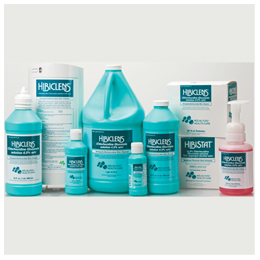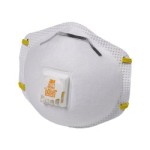I have covered this topic in the past, but with the outbreaks of Ebola popping up and the number of new readers, I decided I would cover it again. A true pandemic is one of the “big ones” that scares me the most, partly because we are so limited by what we can do to prepare for it, and partly because I think it has a better chance of happening then an EMP over American soil.
I used the word “true” because the last pandemic we had, H1N1, aka the swine flu, wasn’t a true pandemic. It had the “morbidity rate” or rate of infection, but the mortality rate was actually lowered compared to past requirements.
Modern Day Pandemic Dangers
The last worldwide pandemic was the 1918 Influenza Pandemic, killing 20-50 million people, including 675,000 in the United States. The population of the United States in 1918 was 103,206,000, meaning that roughly .65% of the population was wiped out.
I believe that if we were to see a pandemic today, we would be in much worse shape. In 1918, if someone wanted to come to America, they had to take a boat. I don’t know the travel time of a vessel in 1918, but I would guess 10-14 days. With modern day air travel, an infected person could make it stateside in 24 hours, infecting everyone onboard in the process. In turn, those passengers would infect everyone on their connecting flights and eventually their families. One infected person could literally infect people travelling to the majority of states within in 24 hours.
The scare right now is Ebola. While Ebola is incredibly nasty and I mourn for the families who’ve been affected by it, it isn’t what scares me the most. Ebola most often comes from West Africa and patient zero is infected by direct contact with infected animals, some of which are used as a food supply, such as bats. It is then possible for human to human infection via the exchange of bodily fluids. Some of the numbers I have seen for mortality rate of Ebola are 50%-90%. However, I found data that suggests there have been less than 4,000 cases since Ebola was discovered in 1976, including the cases from the recent outbreaks.
What scares me is the illness that doesn’t exist yet or a mutation of an existing one that takes on more deadly qualities. For example, if a form of SARS, which has a high mortality rate, married a version of H1N1, we could then be faced with something that infects a large percentage of people and kills 15%-25% of those infected. To be clear, I am not saying that Ebola isn’t a threat. It is decimating countries in Western Africa, killing civilians and healthcare workers. We need to be vigilant and stay informed on any local cases of it. I’m just not sure Ebola has the same threat level as a more virulent strain of the flu. Here is an article from Canada published on June 23, 2014 where a physician and professor stated the following:
“If we had a case in Canada we’d isolate the case, the patient would live or die, and we’d be highly unlikely to have it transmit,”
While it is true that medical care has made incredible strides since 1918, there were no antibiotic resistant superbugs either, such as the recent Resistant ‘Nightmare Bacteria’ Increase Fivefold in Southeastern U.S. While we have far advanced scientific ability and equipment, for a vaccine to be developed, the scientists first have to be able to reproduce it, successfully test it, and then get FDA approval. This could take three months or more.
In case you were wondering, current US population is 318,559,000. If we saw 6.5% of our population die, that would be 2,100,000. When you consider the number of people taken out of the workforce, not just from death by pandemic, but those who are sick, those who are taking care of the sick and those self-quarantining, you can begin to see how quickly essential services could be overwhelmed and collapse.
What Can We Do?
In Flu and Pandemic Preps to Buy Now, I list three items that I own and believe you should as well; Hibiclens, Surgical N-95 NIOSH-certified masks and latex free gloves. Read the article for in depth information. Below are the highpoints.
Hibiclens was prescribed to me during an MRSA scare a few years back. Not only does Hibbiclens kill viruses and bacteria on contact, it will protect you for up to six hours after use.
Surgical N-95 NIOSH-certified masks are not the same as the N-95 masks you can buy at the big box store. These are the masks OSHA requires for medical personal exposed to potential pandemic victims.
After the masks, Latex free gloves are quite possibly the most important PPE (personal protection equipment) you can own. The two most common ways to spread a virus are through the air and through contact. If you wash with Hibiclens and wear gloves, you’ve greatly reduced the risk of direct contact.
We can also be prepared to hunker down and shelter in place to ride things out until we’re sure there is either nothing to worry about or there is a vaccine. This is one event I believe bugging out might be best, if you live in an urban environment and have somewhere else to go.
To either shelter in place or bug out before things take a bad turn, you need to stay on top of current events and be alerted for any stateside outbreaks, especially those in your local area.
One of the best resources for this is one of my sponsors, AlertsUSA. I have received alerts from AlertsUSA for quite some time now and they consistently provide news faster than I can find on mainstream media. They have important connections who pass information along to them, which they in turn pass along to their subscribers. As a reminder, Preparedness Club Members get a 25% discount at AlertsUSA.
Another site you can keep an eye on is the page that the CDC is keeping up to date on the Ebola outbreaks.
My personal plan would be to put the entire house in quarantine when I either a.) hear of multiple cases near me or b.) see local cases announced on the local news. I am lucky enough to be able to work from home occasionally, so I can pull the trigger faster than if I had to go in every day. If I had to go in, I might still impose quarantine and take a couple days of impromptu vacation time.
As stated above, it could take 90+ days to develop a vaccine. For this reason, I think we should have a minimum of 90 days’ supply of food and medicine on hand. The water will probably continue to run, but we should be prepared for waterborne illnesses as well. Having that much water stored is not realistic for 99% of us. Have some stored as well as a means to purify more.
Around the time I started blogging 4 years ago, I read an article that spoke of how woefully ill prepared large communities were for a pandemic. Since that time, some state governments have started taking action. Minnesota is just one of many. I attended a conference on how local hospitals will respond. They said that if any clinic or hospital begins to see an increase in patients with the same symptoms, they activate a call center who then calls other local clinics and hospitals to make them aware and to see if they have any patients to report with those same symptoms.
There are several sites that have been predetermined to use for housing patients. Cots and medical supplies will be brought in quickly. There are caches of medicine scattered around the area, which can be distributed to these locations very quickly when needed. The local media will be kept up to date so they can relay information to the public. There are also various locations around the area that have been chosen as mass vaccine distribution centers. I was also invited to attend a meeting at my church, with high ranking law enforcement officials, local Emergency Managers and medical personnel to discuss the church being one such center. The discussion focused on the best way to quickly and safely distribute the vaccine. One potential option was drive thru style; with people pulling their cars up, vaccine given and they go on their way.
My first thought is that a mass vaccine center is the last place I would want to be. However, when looking at this from a logistical standpoint, it is the fastest way to get the vaccine to the public.
Here is an article from the CDC with information on the Strategic National Stockpile (SNS). While this isn’t a perfect solution, I am glad to see that government is being proactive on this topic.
Please click here to vote for Prepared Christian as a top Prepper site!
If you liked this article please think about sharing it on the social media listed below, thanks!






